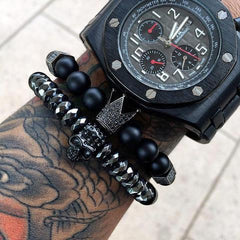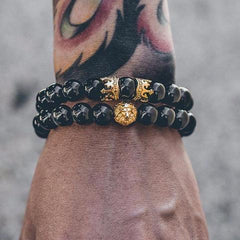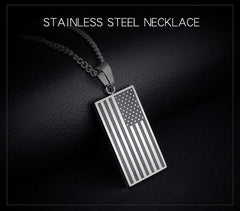Your cart is currently empty.
For such a comparatively small market, Australia is awash with car brands. From stalwarts like Ford, Honda and Mercedes-Benz; more exotic offerings like Peugeot, Great Wall or Škoda; all the way up to high-end marques like Lamborghini, Porsche and Rolls-Royce, Aussies are spoiled for choice.
One of many decisions prospective car buyers consider when shopping for a new motor is how much resale value any given car will retain over time. Depreciation starts as soon as a car rolls out of a showroom, and it can be incredibly aggressive: luxury brands in particular can lose tens of thousands from their resale value after only a few thousand clicks on the clock.
With the economic forecast grimmer than it’s been in a very long time, it’s a question that’s looming larger than ever in the minds of car buyers. How do you make sure you don’t end up buying a financial liability?
DMARGE spoke exclusively to Mike Sinclair, Carsales‘ Editor-in-Chief, who shared some key tips on how to avoid getting stung by depreciation.
“Look for brands that don’t resonate with most Aussies… [for example] brands that have left the market and models that were overpriced to start with.”
“Early EVs haven’t fared well either. Think of the Mitsubishi iMiEV… $60K [new] for no range and golf kart performance.”
It’s also worth considering the type of vehicle you’re interested in purchasing, RedBook.com.au General Manager Ross Booth explains.
“Used vehicle depreciation follows the market trends, with passenger vehicles having the greatest depreciation, SUVs the least, and electric vehicles less than conventional ICE [internal combustion engine] vehicles.”
View this post on Instagram
“Within the segments, any brand that is either new to the Australian market or has announced they are leaving, or recently returned are among the lowest-performing with used values,” Booth reaffirms.
“Some examples are INFINITI, [with] the Q50 and the Q60; MG, with the GS and 3; SsangYong, with the Tivoli, Korando and Rexton… [and] in the ute market, Foton and Mahindra. From a luxury market perspective, the BMW 7 series has amongst the lowest used resale values.”
How To Pick A Winner
So we know what brands to avoid… What brands should you invest in if you’re concerned about depreciation?
Keeping an eye on where the Australian car market is heading is key. Vehicles that are gaining popularity now will demand higher resale values in the future, and body styles that are on the way out will also lose value quicker.
“We see the market trends over the next five years continuing to move towards SUV, with many more models and segments,” Booth reports.
“The ute market will continue to grow, with bigger utes the trend and in the declining passenger segment, a continued move to hatchbacks from sedans. Diesel engines will continue to decline, in particular in passenger vehicles with an increase in hybrid models with improving used values.”
“The electric market in both new and used will remain very small until major improvements in the pricing equation, [and] exception being ‘sports’ EVs such as Tesla and the Jaguar I-PACE.”
As a general rule, the well-established Japanese and Korean brands are likely to weather depreciation the best. Mazdas and Kias tend to hold their value very well in particular. On the luxury end of the market, Lexus and Porsche are outliers that hold their value in a market segment that typically attracts severe depreciation.
View this post on Instagram
Another thing these brands have in common is good customer service and after-sales support. Vehicles from brands like Jeep or Volkswagen which have earned a reputation in Australia in recent years for being a pain in the arse to deal with will also be hit hard by depreciation.
Of course, there are some factors independent of a car’s badging that will affect its future sales price. Mileage, trim level, condition, colour, transmission and model year can all cause a car to appreciate or depreciate faster.
And all things considered, depreciation isn’t the only thing you should consider when buying a new or used car. Booth puts it best:
“Future used values are only one factor when looking at motoring enjoyment, otherwise everyone would be driving a Toyota!”
Read Next
- Why It’s Time For Australians To Rethink Their New Car Colour Choices
- $715,000 Holden Monaro Sale Highlights Australian Auto Industry Hypocrisy
The post Fastest Depreciating Cars Australia: The Brands To Avoid appeared first on DMARGE Australia.
For such a comparatively small market, Australia is awash with car brands. From stalwarts like Ford, Honda and Mercedes-Benz; more exotic offerings like Peugeot, Mahindra or Škoda; all the way up to high-end marques like Lamborghini and Rolls-Royce, Aussies are spoiled for choice.
One of many decisions prospective car buyers consider when shopping for a new motor is how much resale value any given car will retain over time. Depreciation starts as soon as a car rolls out of a showroom, and it can be incredibly aggressive: luxury brands in particular can lose tens of thousands from their resale value after only a few thousand clicks on the clock.
With the economic forecast grimmer than it's been in a very long time, it's a question that's looming larger than ever in the minds of car buyers. How do you make sure you don't end up buying a financial liability? Alternatively, how do you pick brands or cars that'll become modern classics?
DMARGE spoke exclusively to Mike Sinclair, Carsales' Editor-in-Chief, who shared some key tips on how to avoid getting stung by depreciation.
"Look for brands that don’t resonate with most Aussies... [for example] brands that have left the market and models that were overpriced to start with."
"Early EVs haven’t fared well either. Think of the Mitsubishi iMiEV… $60K for no range and golf kart performance."
It's also worth considering the type of vehicle you're interested in purchasing, RedBook.com.au General Manager Ross Booth explains.
"Used vehicle depreciation follows the market trends, with passenger vehicles having the greatest depreciation, SUV’s the least and electric vehicles less than conventional ICE [internal combustion engine] vehicles."
View this post on Instagram
On the flip side, how do you pick a classic (or at least a car that's not going to tank in value the second you're handed the keys)?
"Beauty is very much in the eye of the beholder and so is what defines a classic," Sinclair relates.
"Something that defines a category, starts a trend, was the first or last of a line, they’re all factors. Storied brands and badges. And cars that just get it right – the NA Series Mazda MX-5 is literally a classic example."
"But there are other cars that were pretty horrible to drive and live with that still tick the boxes – The Moke for instance…"
"Vehicles that are investment gems tend to have very high demand and very low supply which pushes up the price," Booth adds.
"A vehicle may not be the most popular sold as new and sold in volume, however, over many, many years scarcity can drive the price up. If you don’t want to wait 30+ years, look for popular brands and segments today, with vehicles with low supply and high demand. The condition and low kilometres are paramount in a future investment vehicle."
A good example of a vehicle that was a commercial failure upon release but is now hot property is the iconic DeLorean DMC-12. Its poor build quality, weak on-road performance and high sticker price made it a flop, but has since gained a cult following thanks to its distinctive look and high-profile appearances in the Back To The Future film series. Almost 40 years after its first release, this example is selling for $88,000 on Carsales in NSW.
View this post on Instagram
Changing consumer preferences will be key in determining what will be the next 'classic cars'. For example, SUVs and utes are accounting for an ever-higher percentage of Australian car sales, with the passenger segment declining – particularly sedans. For example, The Kia Stinger or VF Holden Commodore stand a good chance of keeping a high resale value well into the future.
The VF Commodore was the last Holden model to be made in Australia, something else that will increase its desirability. It was also the last Holden to be offered with a V8. Normally, brands leaving the market tend to reduce resale values, but Holden's unique identity as the quintessentially Australian brand could mean that surviving Aussie-built models could be worth squillions in coming years. Case in point: this 1969 Holden Monaro just sold for $715,000.
Conversely, the Stinger is the first of its line, which can also potentially boost its resale value. It may be the only in its line if Kia don't make a second generation, which could also help (or hinder). Korean and Japanese marques also tend to keep their resale value better than other brands – another pro for the Stinger.
Both cars are large sedans: a dying breed in the Australian car market. High-specced versions of these cars would be a safe bet for resale value heroes, and could potentially become considered classic in a few decades' time.
That said, buying a car for its future resale value or for the off-chance of it become a classic is just as financially ill-considered as buying Lotto tickets with a payday loan. Booth left us with this:
"Future used values are only one factor when looking at motoring enjoyment, otherwise everyone would be driving a Toyota!"
Read Next
- Why It’s Time For Australians To Rethink Their New Car Colour Choices
- Stunning 1950’s German Gas Station Photo Reveals Forgotten ‘Golden Age’ Of Motoring
Subscribe to the DMARGE newsletter
Follow DMARGE on Instagram
Follow DMARGE on Facebook
The post Motoring Investment Experts Share How To Pick The ‘Classic Cars’ Of The Future appeared first on DMARGE.







